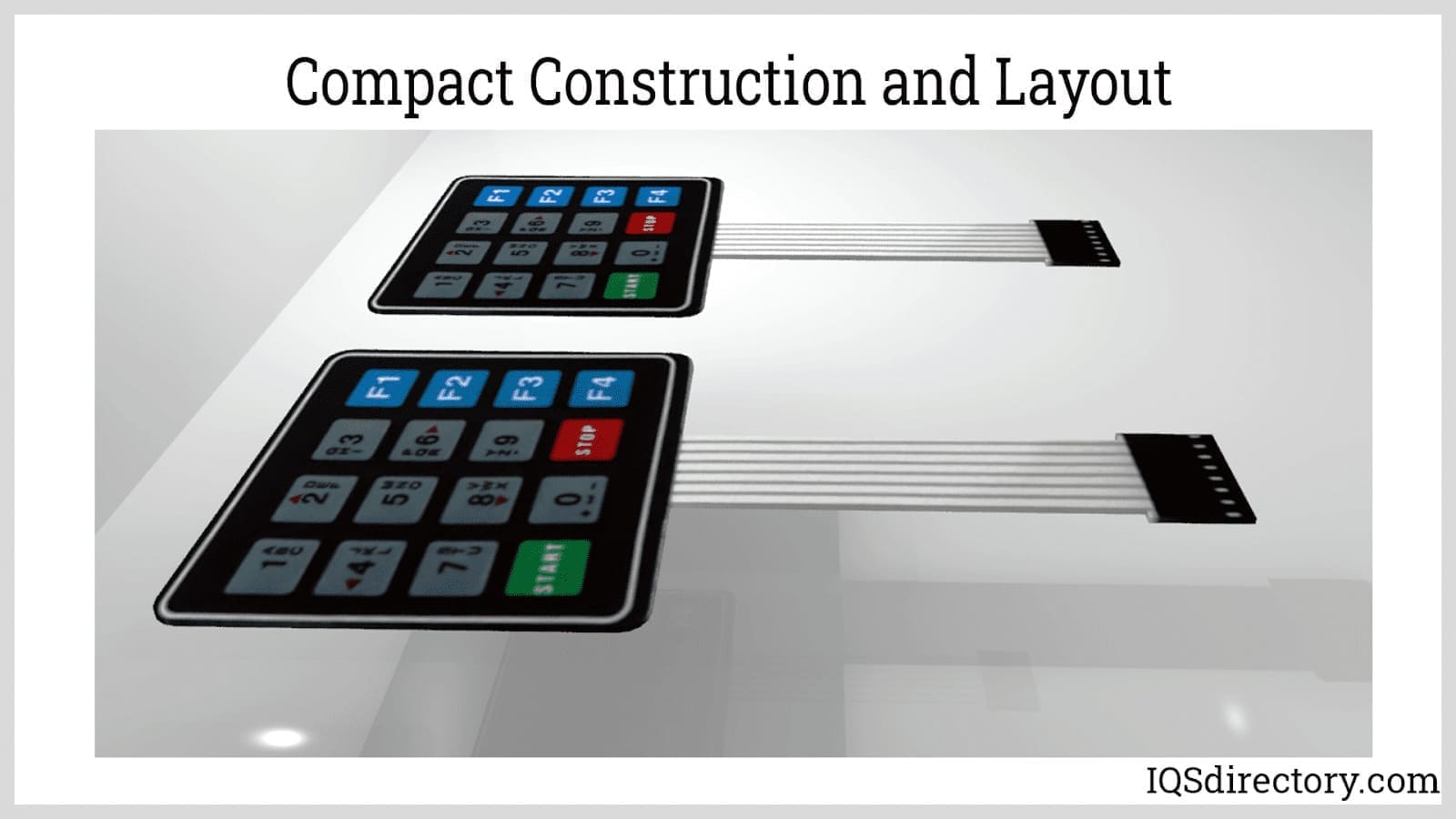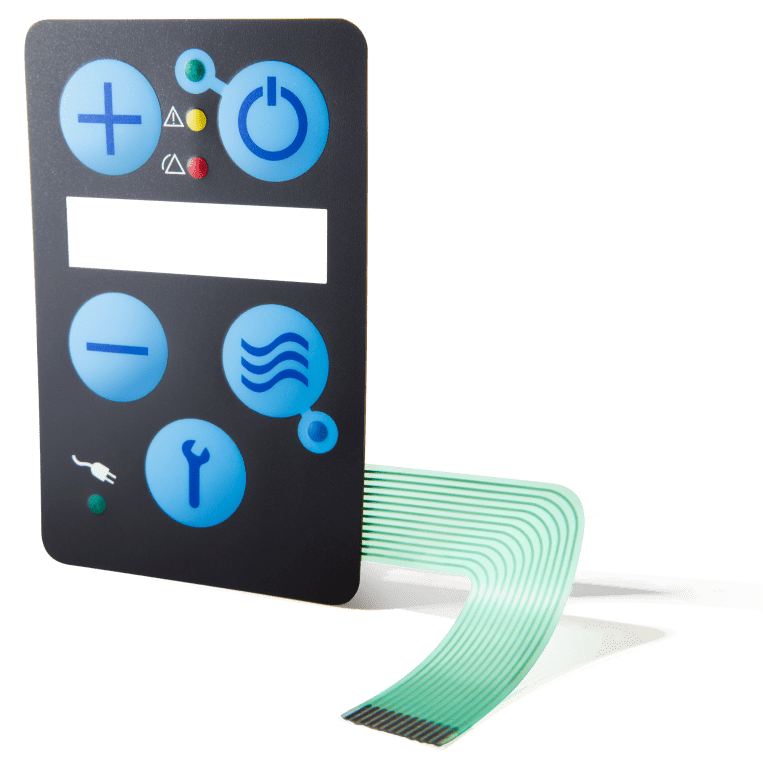A Comprehensive Guide to Membrane Switches for Product Designers
A Comprehensive Guide to Membrane Switches for Product Designers
Blog Article
Comprehending the Value of Membrane Switches in Interface
Membrane switches are integral components in the design of effective user interfaces, facilitating not only capability yet additionally enhancing aesthetic appeal and user communication. Their one-of-a-kind attributes, such as resistance to ecological variables and personalized layouts, make them suitable for a varied variety of applications across multiple sectors. As we discover the future fads and different advantages linked with Membrane technology, it becomes clear that these buttons are greater than just parts; they stand for a convergence of development and usefulness. The ramifications of this technology on customer experience are worth examining better.
What Are Membrane Buttons?

The spacer layer, which contains glue properties, enables the splitting up of the circuit layer from the overlay, guaranteeing that the switch continues to be in a non-activated state up until pressed. When stress is put on the overlay, it compresses the spacer layer, linking the space and finishing the circuit in the underlying layer. This style not just minimizes the physical space needed for standard mechanical switches yet likewise improves the resilience of the tool, as Membrane switches are typically immune to dust, moisture, and various other environmental aspects.
Typically located in applications ranging from consumer electronic devices to medical gadgets, Membrane switches are indispensable to contemporary innovation, offering a reliable and straightforward interface that straightens with contemporary style requirements.
Benefits of Membrane Switches
While various button technologies exist, Membrane Switches deal distinct benefits that make them specifically desirable in different applications. Among the primary benefits of Membrane buttons is their compact design, which enables for space-saving executions in devices where property is limited. Their slim profile not just boosts visual allure but likewise helps with lightweight building.
Another considerable advantage is their resistance to environmental aspects. Membrane buttons are generally sealed against dampness, dust, and impurities, making them perfect for usage in demanding environments, such as medical tools and industrial devices. This resilience prolongs the life expectancy of the button, minimizing upkeep expenses and enhancing dependability.
Additionally, Membrane switches can be customized to meet details layout needs, including unique graphics and shades that boost customer communication. Their tactile feedback options can additionally be customized to give a satisfying user experience. In addition, Membrane switches are cost-effective, particularly in high-volume applications, as they can be generated effectively.
Applications in Different Industries

In the customer electronic devices market, Membrane switches are common in gadgets such as microwaves, washing equipments, and remote controls. Their responsive responses and visual choices improve user experience while providing a sleek, modern-day appearance. Furthermore, automotive manufacturers utilize Membrane switches in dashboard controls and infomercial systems, where area is limited, and user involvement is essential.
Additionally, the industrial sector leverages Membrane switches in control panels for equipment and tools, permitting intuitive procedure in commonly severe environments. Their resistance to chemicals and dampness guarantees longevity and dependability in these applications. In general, the flexibility of Membrane Switches contributes significantly to their prevalent use, making them crucial in different technical use this link domains.
Design Factors To Consider for Membrane Switches

When developing Membrane buttons, a number of vital factors to consider should be considered to make sure optimum functionality and individual experience. The selection of products is critical; choosing long lasting, high-quality substratums can boost the button's longevity and resistance to environmental elements such as wetness and temperature changes.
Second of all, the style of the visuals overlay must focus on clearness and convenience of use. Icons and text have to be legible, and the format must assist in intuitive communication (membrane switches). In addition, tactile visit site responses is crucial; including a tactile dome or various other devices can enhance the individual experience by offering physical verification of activation
An additional important aspect is the button's electric efficiency. Designers should make certain that the conductive traces are properly designed to lessen resistance and avoid signal disturbance. This entails examining the required actuation force and guaranteeing compatibility with the digital parts they will certainly user interface with.

Future Patterns in Membrane Modern Technology
As technology remains to development, Membrane switches are poised to develop dramatically, driven by innovations in materials and producing strategies. One arising fad is the incorporation of sophisticated materials, such as conductive inks pop over to these guys and versatile substratums, which boost resilience and decrease the general weight of Membrane buttons. These products not just improve the tactile response but also allow for the design of switches that can withstand harsher environmental conditions.
Furthermore, the integration of touch-sensitive technologies is transforming traditional Membrane Switches right into more interactive individual interfaces. Capacitive touch sensors embedded within Membrane button panels can supply a much more responsive and intuitive customer experience, straightening with the expanding demand for sleek, modern-day layouts in customer electronics.
Additionally, advancements in printing strategies, such as electronic and 3D printing, enable rapid prototyping and modification of Membrane switches. This adaptability enables producers to respond faster to market demands and customer preferences.
Lastly, sustainability is coming to be a considerable focus, with suppliers checking out environmentally friendly products and processes. As these fads unravel, the future of Membrane technology assures enhanced capability, aesthetic allure, and environmental duty, solidifying their duty in sophisticated user interfaces across numerous industries.
Verdict
To conclude, Membrane Switches represent an essential element in the layout of interface, incorporating functionality with aesthetic adaptability. Their advantages, including durability and resistance to environmental variables, make them suitable for diverse applications throughout various markets. Thoughtful design considerations improve customer communication and experience. As developments in innovation proceed, the advancement of Membrane switches is expected to additional improve interface, driving innovation and enhancing functionality in a significantly intricate technological landscape.
Membrane switches are essential elements in the design of effective user interfaces, facilitating not just functionality however likewise enhancing aesthetic allure and customer interaction.Membrane Switches serve as an important component in numerous customer interfaces, assisting in a seamless interaction in between individuals and electronic tools.While countless switch technologies exist, Membrane Switches deal unique advantages that make them specifically preferable in various applications.Moreover, Membrane switches can be tailored to satisfy specific layout demands, incorporating special graphics and colors that boost individual interaction.In final thought, Membrane Switches represent a crucial component in the layout of user interfaces, incorporating performance with aesthetic adaptability.
Report this page